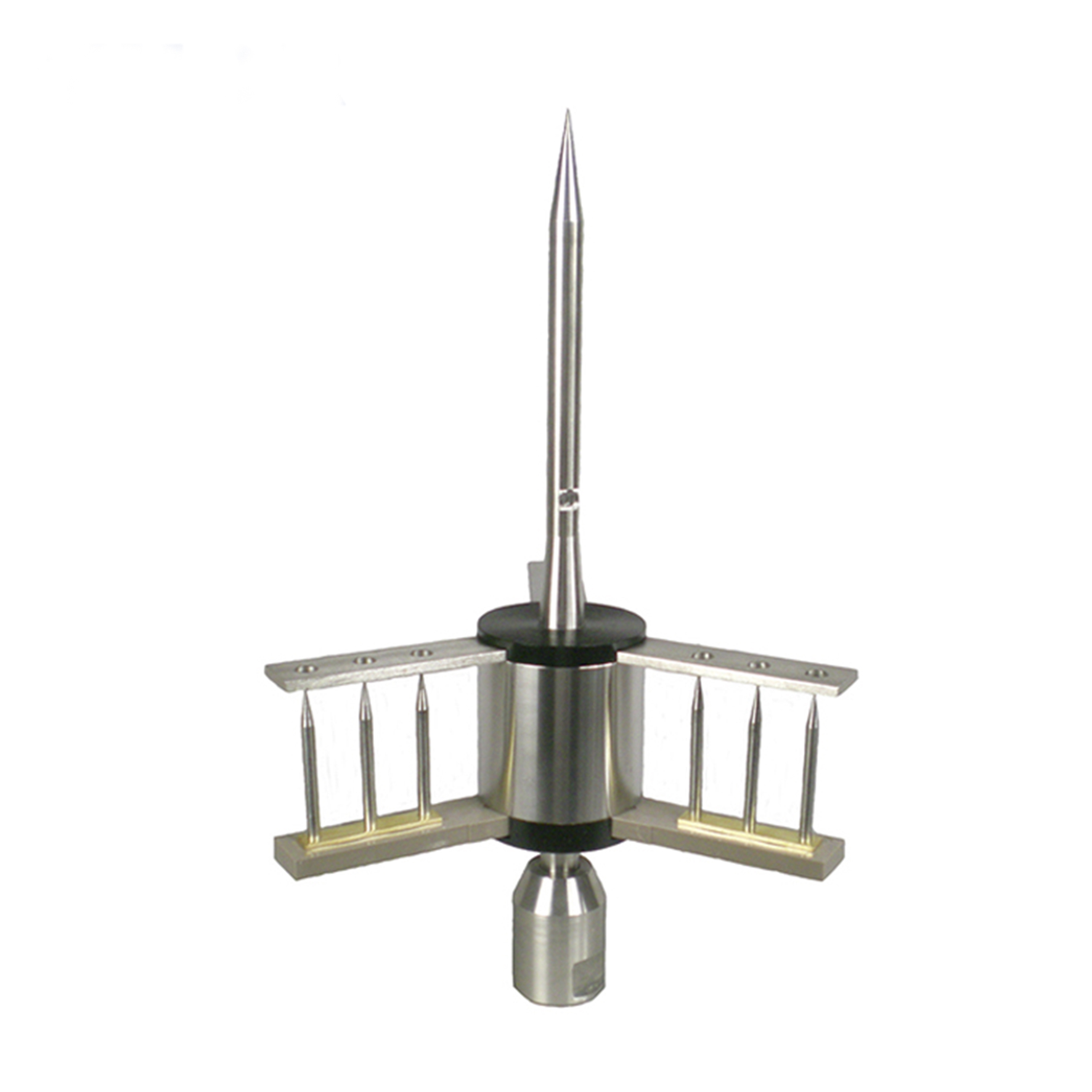Lightning rods guide lightning currents to the ground through corona discharge and a low-impedance path, protecting buildings. Its effective protection radius is 1.5 to 2 times its height, and the grounding system requires low resistance and good conductivity. Experiments and IEC 62305 standards have verified its effectiveness and reliability.

Working principle and effectiveness analysis
Lightning rods guide lightning currents to the ground. When the electric field strength in a thundercloud reaches a certain level, sharp metal objects on the ground (such as lightning rods) concentrate the electric field, causing the surrounding air to ionize and create an upward conductive channel, known as "corona discharge."
The pointed shape at the top of the lightning rod enables it to concentrate the electric field more easily, triggering corona discharge. This discharge form releases electrons or ions to pre-ionize the surrounding air, reducing air resistance and making the lightning strike the rod more likely than other parts nearby.
When lightning strikes, the lightning rod provides a low-impedance path, directly guiding the lightning current to the ground. The effective protection radius of a lightning rod is usually 1.5 to 2 times its height, i.e., protection radius ≈ 1.5 × height.
By connecting to the grounding system, the lightning rod disperses the lightning current into the ground, preventing the current from passing through other parts of the building. The grounding system design must meet the following conditions: the grounding resistance should be as low as possible (generally less than 10 ohms), and the grounding materials should have good conductivity and corrosion resistance.
Experiments by the National Institute of Standards and Technology (NIST) in 1983 showed that in a simulated lightning environment, the probability of damage to model buildings with installed lightning rods was significantly lower than that of models without lightning rods.
According to the International Electrotechnical Commission (IEC) standards, the design and installation of lightning rods must follow the IEC 62305 series standards to ensure they can effectively guide lightning currents and reduce lightning damage.
According to a paper in the Journal of Atmospheric and Solar-Terrestrial Physics, lightning rods can effectively guide lightning currents and reduce lightning damage to buildings. The paper, through field experiments and numerical simulations, validated the protective effect of lightning rods at different heights and environmental conditions, further proving their reliability and effectiveness in practical applications.
Comparison Table of Lightning Rod Effectiveness
| Lightning Rod Type | Height (meters) | Effective Protection Radius (meters) | Damage Probability (with lightning rod) | Damage Probability (without lightning rod) |
|---|---|---|---|---|
| Standard Lightning Rod | 10 | 15-20 | Low | High |
| High-Efficiency Lightning Rod | 20 | 30-40 | Lower | High |
| Advanced Lightning Rod | 30 | 45-60 | Very Low | High |
References:
- Rakov, V.A., & Uman, M.A. (2003). Lightning: Physics and Effects. Cambridge University Press.
- Cooray, V. (2010). The Lightning Flash. Institution of Engineering and Technology.
- "Experimental study on the protection zone of a lightning rod," Journal of Atmospheric and Solar-Terrestrial Physics, Vol. 71, Issues 12-13, August 2009, Pages 1361-1370.
